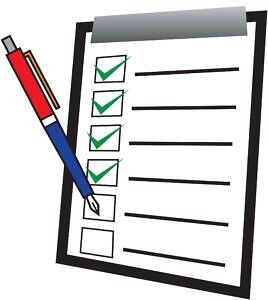
The Office of Personnel Management requires a well-supplemented application for federal disability retirement. Merely being eligible is not enough. Evidence is key. Below are 8 facts you need to be sure you document when filing for federal disability retirement with OPM.
1. You suffer from a medical condition
You must show that you suffer from one or more diagnosed illnesses or injuries. Another helpful piece of evidence to show is that you have symptoms equivalent to a recognized disease or injury. Relevant and present medical records are needed to support this claim.
2. You can no longer provide “useful service”
You must prove that due to your medical condition, you can’t adequately perform your current job or any other job you’re qualified to perform. Also, you will need documentation from your agency showing you were considered for alternative positions.
3. Your service deficiency and medical condition are related
It’s not enough to prove you have a medical condition or prove you can no longer provide useful service, you must provide OPM with an explanation of how your medical condition prevents you from performing your job duties. There is a big difference between Total Disability and Occupational Disability. It’s important your doctor know the difference to give you the appropriate medical opinion.
4. Your disability is expected to last at least 1 year
This is where medical records are extremely important and necessary to back up your medical claim. “Lack of sufficient medical evidence” is often why claims get denied at OPM. When filing for Federal Disability Retirement, your medical condition MUST last for AT LEAST one year.
5. You became disabled while serving as a federal employee
Your disability doesn’t have to be job-related, but it must have occurred or been aggravated while serving as a federal employee.
6. There isn’t another position available for you
Your employing agency must try to find an alternate position you are qualified to perform. The position must also be at the same grade or pay level and be a reasonable commute from your residence. You must also prove no position is open or that you can’t fill any positions that are open due to your medical condition.
7. Your agency is unable to make reasonable accommodations for your medical condition(s)
Showing this can be difficult. You must establish the accommodations your condition would require. Also, you must show why its unreasonable for your agency to make those accommodations. A tricky thing here is “reasonable” is a matter of opinion. OPM could question your reasons if you have a different interpretation of what could/should be done to help you fill an available position.
8. You have applied for Social Security Disability benefits
You must have applied for Social Security benefits and show OPM you have done so. If your application for SSD benefits is withdrawn for any reason, it’s very likely to hurt your federal disability retirement claim with OPM.
The following 2 forms must also be filled out when filing for Federal Disability Retirement:
- SF 3107—Application for Immediate Retirement
- SF3112—Documentation in Support of Disability Retirement
A well-documented application is key with OPM. It can save a ton of undue stress, time, and even money.
If you think you qualify for federal disability retirement, please call us at 877-226-2723 or fill out this INQUIRY form today! Our consultation is always FREE.
